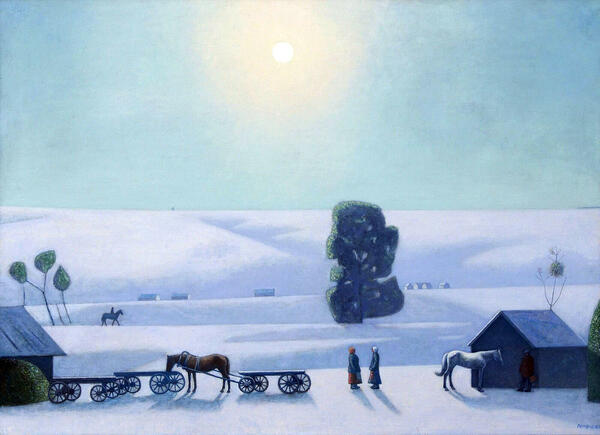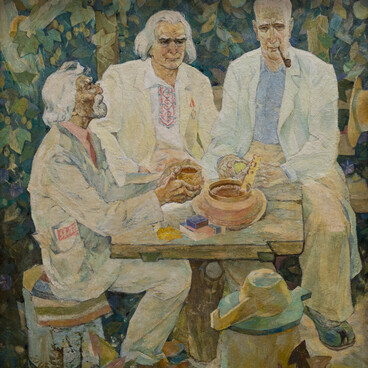Pyotr Petrov was born in the village of Kildyushevo, in a remote southern district of the Chuvash Republic, in April 1950. He spent his childhood in Kazakhstan. In 1967, he returned to Chuvashia and entered the Art and Graphics department of the Chuvash Pedagogical University.
The artist works in the genre of landscape, occasionally making still lifes and, more rarely, portraits. He also has purely abstract compositions, which are made up of multi-colored squares and rectangles.
It can be said that Petrov’s works always bear a philosophical contradiction. On the one hand, the artist longs for specific places, which is understandable. After all, the landscape (both in real life and in art) can be, like no other genre, parochial, local, and revealing the indigenous psyche that is merged with nature itself. Petrov’s landscape is Chuvash, in a subtle way. It is discreetly Chuvash. It is crowded, like toy houses, yet with plenty of open space around, desolate. Human figures either fade away or are barely discernible against the backdrop of a fence or a house as if they were not there. This can also be seen in the bent figures of women:
The artist works in the genre of landscape, occasionally making still lifes and, more rarely, portraits. He also has purely abstract compositions, which are made up of multi-colored squares and rectangles.
It can be said that Petrov’s works always bear a philosophical contradiction. On the one hand, the artist longs for specific places, which is understandable. After all, the landscape (both in real life and in art) can be, like no other genre, parochial, local, and revealing the indigenous psyche that is merged with nature itself. Petrov’s landscape is Chuvash, in a subtle way. It is discreetly Chuvash. It is crowded, like toy houses, yet with plenty of open space around, desolate. Human figures either fade away or are barely discernible against the backdrop of a fence or a house as if they were not there. This can also be seen in the bent figures of women:


